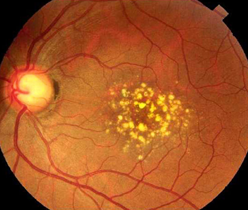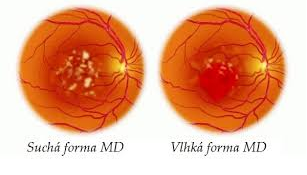

Age Related Macular Degeneration (ARMD)
Age-related macular degeneration (AMD or ARMD) is the most common cause of vision loss in those aged over 50 years. AMD is a condition in which the central part of the retina, called Macula, gets damaged. This affects your central vision which is needed for reading, writing, driving, recognizing people’s faces and doing other fine tasks.
It causes a gradual loss of central vision. There are two main types of AMD – ‘wet’ and ‘dry’. ‘Wet’ AMD is most severe but more treatable. Visual loss caused by AMD cannot normally be reversed, hence early Diagnosis and Treatment is very important.
WHAT ARE THE SYMPTOMS OF AGE-RELATED MACULAR DEGENERATION?
The main early symptom is a distorted vision, in which a grid of straight lines appears wavy and parts of the grid may appear blank. A ‘blind spot’ then develops in the middle of your visual field. This tends to become larger over time as more and more rods and cones degenerate in the macula. Words in a book or newspaper may become blurred. Colours appear less bright. You have difficulty recognizing faces.
Treatment:
If you have the dry form of AMD, there is no treatment, but supplements with antioxidants (vitamins A, C,E, zinc, lutein and beta-carotene) may decrease the risk of developing wet AMD.
For wet ARMD, the anti-VEGF medicines are injected using a fine needle directly into the central cavity of the eye. These injections are needed to be injected once in every month till the bleeding on the retina subsides. Serial OCT and FFA tests are important in determining the response and course of the treatment. Other treatment modalities include special laser application to the retina and surgery in exceptional cases.
